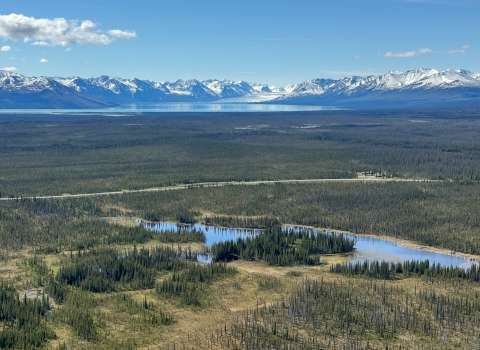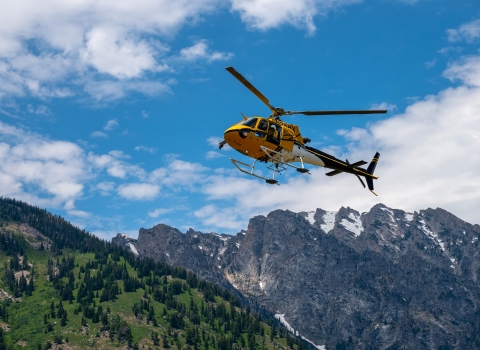The U.S. Fish and Wildlife Service and the agency's partners will pool $4.8 million in 2004 to remove 91 barriers to fish passage fish passage
Fish passage is the ability of fish or other aquatic species to move freely throughout their life to find food, reproduce, and complete their natural migration cycles. Millions of barriers to fish passage across the country are fragmenting habitat and leading to species declines. The U.S. Fish and Wildlife Service's National Fish Passage Program is working to reconnect watersheds to benefit both wildlife and people.
Learn more about fish passage in 26 states.
Service funds for the popular Fish Passage Program, amounting to $2.8 million, will be supplemented by another $2 million in matching funds from a wide array of partners ranging from civic and conservation organizations, local and State governments and other Federal agencies.
"Since 2001, the Fish Passage Program has removed 158 barriers across the country," said Interior Secretary Gale Norton. "The Service, working with local communities and partner agencies, is using a voluntary, non-regulatory approach to restore natural flows and fish migration. Rivers are running their natural course, habitat has been restored, and the fish are coming back.?
"Our partners in this program enable us to really stretch taxpayer's dollars," Director Steve Williams said. "That gives us a budget that lets us do far more than we could if we were in this alone. It's all voluntary, and it remains one of the most popular programs.?
Fish Passage works to remove obstructions in waterways that prevent fish from reaching spawning grounds or historic habitat. Projects can be as small as inserting culverts under roads or railroad tracks or as large as the removal last February of the 95-year-old Embrey Dam near Fredericksburg by a military explosives team.
Many of the small dams targeted for removal date as far back as the American and Industrial Revolutions. Those dams were built either to accommodate early barge traffic or to provide power or irrigation for a young country. As times changed, many of the dams were abandoned but remained in place, serving only to block populations of fish and contributing to their gradual decline.
Completion of the 2004 projects will open 19,364 acres and more than 3,048 miles of waterways for fish, contributing to larger populations and more recreational fishing opportunities.
The U.S. Fish and Wildlife Service is the principal Federal agency responsible for conserving, protecting and enhancing fish, wildlife and plants and their habitats for the continuing benefit of the American people. The Service manages the 95-million-acre National Wildlife Refuge System, which encompasses 544 national wildlife refuges, thousands of small wetlands and other special management areas. It also operates 69 national fish hatcheries, 64 fishery resources offices and 81 ecological services field stations. The agency enforces federal wildlife laws, administers the Endangered Species Act, manages migratory bird populations, restores nationally significant fisheries, conserves and restores wildlife habitat such as wetlands, and helps foreign and Native American tribal governments with their conservation efforts. It also oversees the Federal Assistance program, which distributes hundreds of millions of dollars in excise taxes on fishing and hunting equipment to state fish and wildlife agencies.
For more information about the U.S. Fish and Wildlife Service,
visit our home page at http://www.fws.gov
Visit the Mountain Prairie website at: http://mountain-prairie.fws.gov


